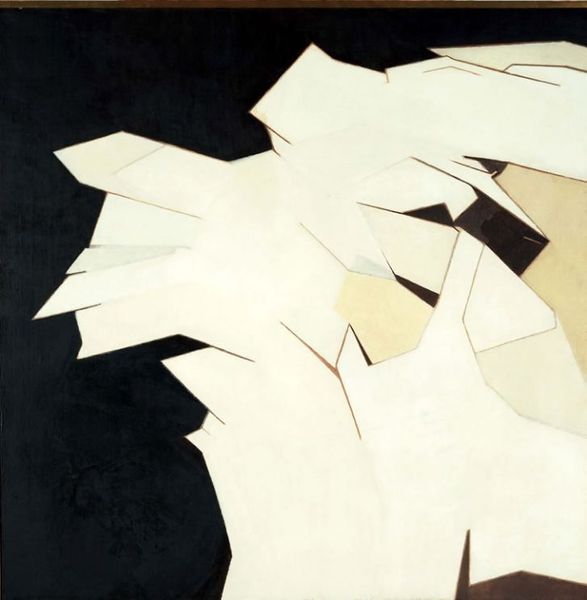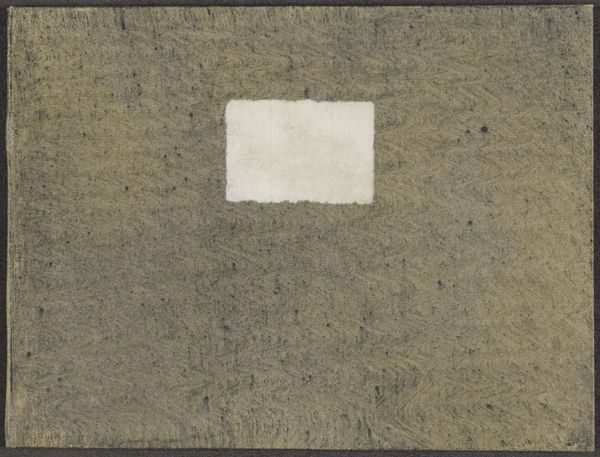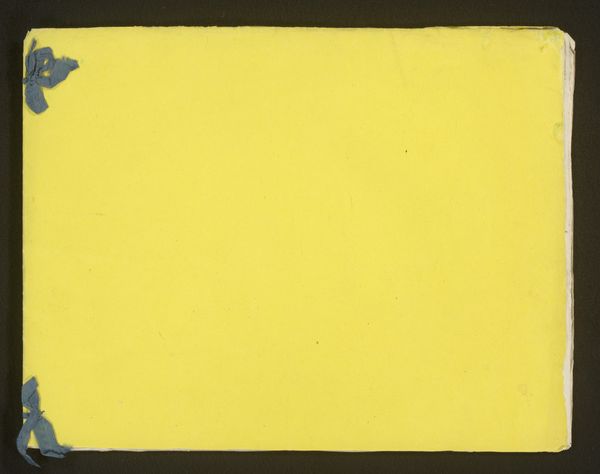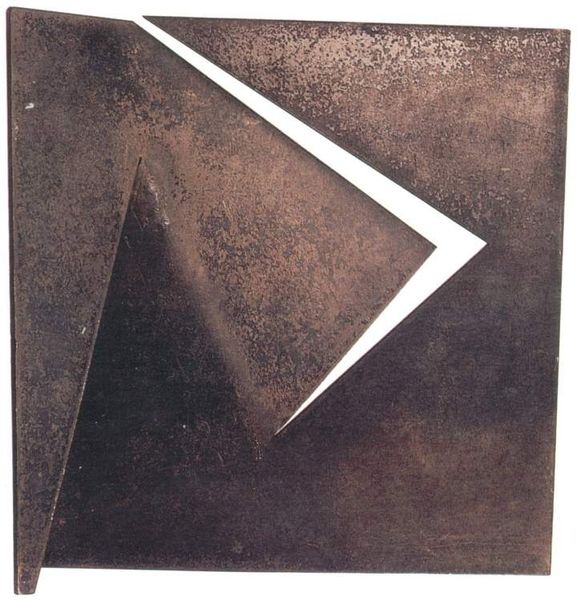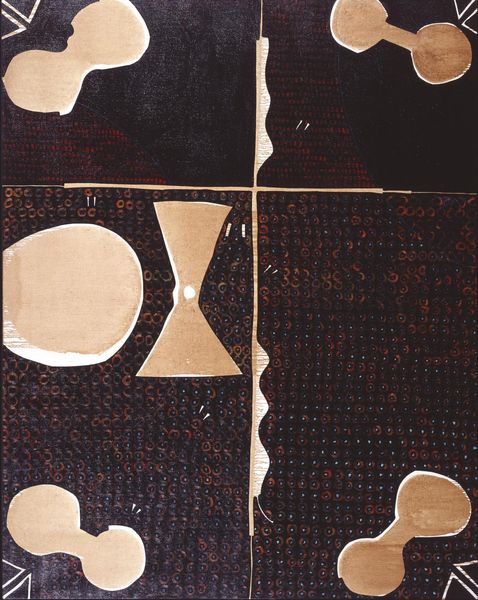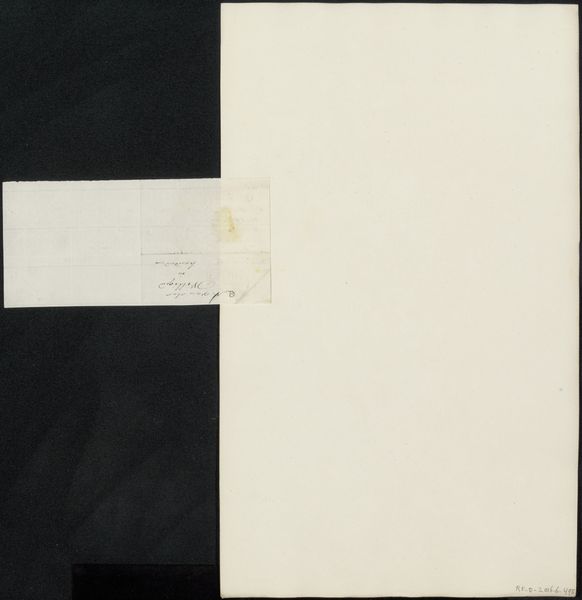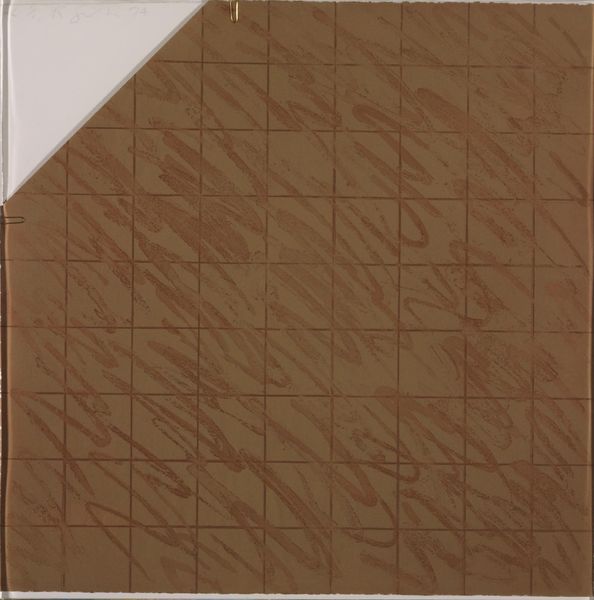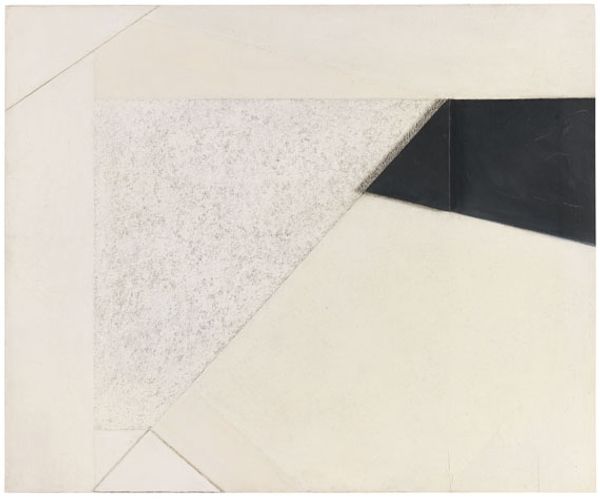
drawing, paper, ink, graphite
#
abstract-expressionism
#
drawing
#
minimalism
#
paper
#
form
#
ink
#
acrylic on canvas
#
geometric
#
abstraction
#
line
#
graphite
#
hard-edge-painting
#
monochrome
Copyright: (c) Ellsworth Kelly, all rights reserved
Editor: So this Ellsworth Kelly piece, "Untitled" from 1958, it looks like it's ink and graphite on paper. I'm struck by how stark the contrast is, and how bold this singular shape is, but what do you see in this work? Curator: Considering the socio-political context of the late 1950s, Kelly's reduction to pure form challenges the prevailing abstract expressionist mode, with its emphasis on personal angst and gesture. How does the lack of identifiable subject matter potentially comment on the expectations placed on art and its role in society at that time? Editor: So you're saying, by moving away from that emotional expression, he’s making a statement about what art *should* be doing? Curator: Precisely! Think about the rise of mass media and consumerism. Kelly's clean lines and reductive forms can be seen as a reaction against the visual clutter and emotional manipulation prevalent in advertising and propaganda. His art demands a different kind of attention. Do you notice the subtle imperfections within those solid blocks of color? Editor: I do! There's a definite sense of the hand in there, despite the geometric nature of the piece. So it's not *totally* removed from the artist's presence. Curator: Exactly. And what does that tension – between the mechanical and the manual, the impersonal and the personal – suggest to you? Perhaps about art’s changing role? Editor: It sounds like he's paving the way for later minimalist explorations. It’s fascinating to consider how this piece reflects, and pushes against, the artistic and cultural currents of its time. Thank you! Curator: A worthwhile discussion, indeed. I’ll be considering this one from a new point of view for some time.
Comments
No comments
Be the first to comment and join the conversation on the ultimate creative platform.

